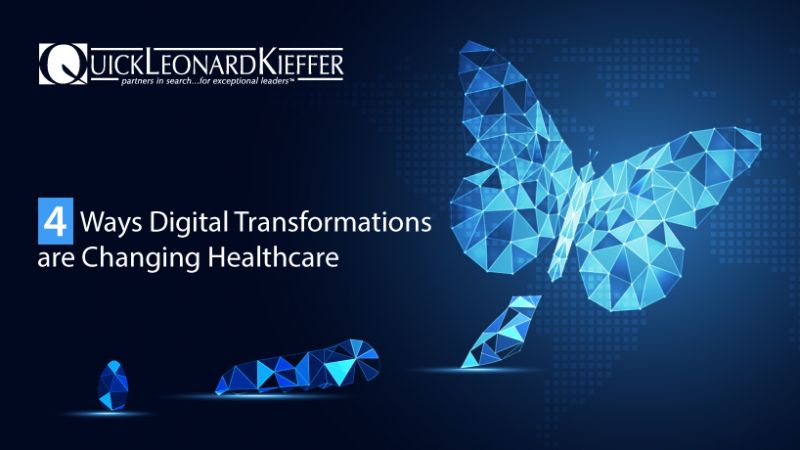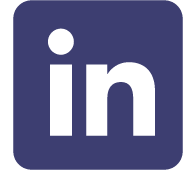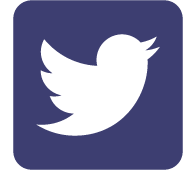In 2020, it’s hard to imagine any area of life being able to resist change due to technology. It’s not science fiction anymore for our cars to drive us (albeit just a few of us so far) to work while we watch a live soccer game from Europe on a tiny handheld computer. We can wear bracelets that tell us exactly how often our heart is beating, how many hours we slept last night and how many times we tossed and turned (more on these later). And the list goes on and on and on.
Each year seems to top the last, introducing new mindblowing technologies that essentially change how we live our lives—and the field of healthcare is no different.
For some time now, there’s been a digital transformation taking place in healthcare, changing how care is designed, shopped for, and ultimately administered. Below, we’ll share our insights on a few of the more prominent digital trends in healthcare and why they matter.
1. Wearable Medical Devices
One of the more recent and already most pervasive transformations in healthcare has come in the form of wearable medical devices. Rarely is that strap you see around someone’s wrist just telling them what time it is—and they’re only getting more common and more complex.
According to a study by Business Insider Intelligence, more than 80% of consumers are willing to wear some sort of fitness technology.
These wearable medical devices—like Fitbits, smartwatches, and WHOOP Straps—perform a litany of health tracking functions for the wearer like heart rate monitoring, exercise tracking, sleep monitoring, and sweat metering. This rapid acceleration of functionality and ease of accessibility contributed to the sharp rise of US consumer use from 9% in 2014 to 33% in 2018.
And this demand isn’t just coming from consumers.
There’s a tremendous incentive for providers to continue to adapt and implement wearable technology to promote preventative care for patients and increase patient outcomes. One stunning example is the FDA approved pill that tracks if a patient has swallowed it—the Ability MyCite. This works through a sensor in the pill communicating with a wearable medical patch. Developments like this are promising for the future of healthcare as strict medication adherence is crucial for treating the many chronic diseases plaguing Americans today.
2. On-Demand Healthcare
The same type of technological transformation that led to the boom of the wearable device has played its part in changing how the population views how they search for and partake in their healthcare.
An increase in the synergy between healthcare and mobile devices has led, in part, to the rise of healthcare consumerism. Like they shop for their cars, internet providers, and monthly subscriptions, people want to have a say in how they obtain their healthcare and consume it on their own terms.
As healthcare and online devices become more and more intertwined and the sheer number of smartphone users continues to skyrocket (currently around 5 billion), consumers are more frequently going online to obtain medical information than ever before. To meet this demand, companies like Roman have emerged to better meet the preferences of their patients and treating them from their own homes, confidentially—which leads us directly to our next topic, telehealth.
3. Telehealth
As consumers want to take more and more responsibility in making choices in their healthcare, telehealth has ramped up in popularity and implementation to answer the call. Put simply, telehealth connects patients to health care services through a variety of technology like video conferencing, remote monitoring, electronic consults, and wireless communications.
This virtual care is intended not to replace doctor visits altogether, but rather too work in concert with office visits and thus provide a much higher quality and ease of care. For people that have physical difficulty in traveling to their appointments or live in a remote rural community, telehealth can provide immediate access to care that otherwise would go unadministered. Additionally, an increasing amount of insurance cares are providing reimbursement for many uses of telehealth. This ease of access allows for more consistent follow-up care and better adherence to medical recommendations for patients.
Beyond just being a buzzword in the field, many experts view telehealth as the future of healthcare entirely. Wendy Deibert, who directed Mercy Hospital’s SafeWatch eICU program, argues that telehealth will eventually “just going to be the way we deliver health.”
4. Big Data
As these new and emerging technologies continue to flood into healthcare systems, the industry is increasingly finding itself submerged under massive amounts of data. It’s not news that for several years many organizations preached that the coming of strong analytic departments would be the key to harnessing that data and extracting its value for both the industry and patient outcomes.
Within all of that data lies tremendous value for the healthcare field as a whole. As systems get better at interpreting all of this data, fewer mistakes will be made throughout the patient experience. It will be much easier for software to reduce the number of medication errors that are made and increase the efficacy of identifying high-risk patients. MeDAware, an Israeli startup was used in a clinical study that analyzed records for 747,985 patients looking for errors—the software flagged 15, 693 of these records, showing that systems like itself could be a highly valuable tool for physicians and ultimately elevating patient outcomes drastically.
QLK Executive Search
Looking to acquire top analytic talent in healthcare? Partner with the industry experts at QLK today. Our dedicated team of recruiters has been connecting organizations with exceptional leaders and resolving critical hiring needs for 20 years.


